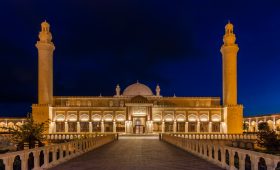Kasanka Bat Migration: An Extraordinary Natural Spectacle in Zambia
Experience the Unique Kasanka Bat Migration
Every year, from mid-October to mid-December, Kasanka National Park in Zambia becomes the stage for one of the most remarkable wildlife events on the planet: the Kasanka Bat Migration. During this period, approximately 10 million straw-colored fruit bats converge in the park, creating an awe-inspiring spectacle as they fill the sky at dusk. The synchronized flight patterns of these bats form mesmerizing formations, showcasing nature’s intricate choreography.
Why Visit Kasanka National Park?
Kasanka National Park, located in the Serenje District of Zambia, spans an area of about 390 to 450 square kilometers, making it one of the smaller national parks in the country. Despite its size, the park offers a diverse range of habitats, including Miombo woodlands, evergreen forests, and papyrus swamps. These environments support a rich variety of wildlife, including the elusive sitatunga, hippos, and over 114 recorded mammal species.
Best Time to Witness the Migration
To experience the bat migration at its peak, plan your visit between mid-October and mid-December. This is when the bats are most numerous, and their evening flights are most impressive. The park’s diverse ecosystems are also particularly vibrant during this time, offering excellent opportunities for wildlife observation.
Getting to Kasanka National Park
Reaching Kasanka National Park requires some planning, but the journey is rewarding. Here are your options:
- By Air: Fly into Kenneth Kaunda International Airport in Lusaka, Zambia’s capital. From there, you can arrange a charter flight to Kasanka Airstrip, located within the park.
- By Road: For those seeking adventure, hire a car in Lusaka and embark on a scenic 7-8 hour road trip to the park. The drive offers breathtaking views of Zambia’s countryside.
Exploring the Park
Once at Kasanka, you have several options for exploring the park and its surroundings:
- Guided Tours: Join a guided tour to explore the park with knowledgeable local guides. They provide valuable insights into the bat migration and other wildlife.
- Self-Driving: Rent a 4×4 vehicle to explore at your own pace. The park’s well-maintained dirt roads are suitable for off-road driving.
Considerations for Travelers
While Kasanka offers a unique and unforgettable experience, it’s important to be prepared for its remote location. Accommodations within the park are limited, so booking in advance is advisable. Additionally, the park’s remote setting means that amenities are basic, and travelers should be ready for a more rustic experience.
In summary, the Kasanka Bat Migration is a natural wonder that offers a rare glimpse into the beauty and complexity of wildlife. With careful planning, you can witness this extraordinary event and explore the diverse ecosystems of Kasanka National Park.




